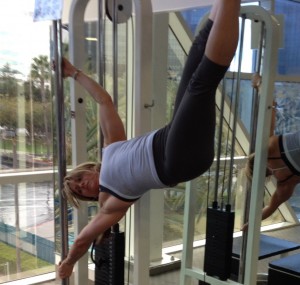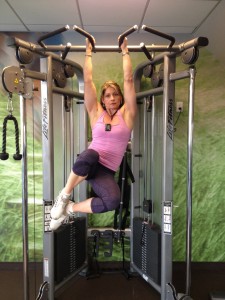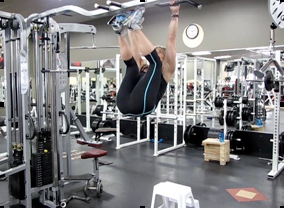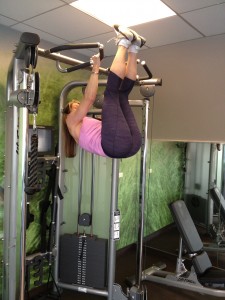
The human flag is a pretty impressive strength move. I discovered it not too long ago, and I thought that it’d be cool if I could do one, especially since I’m closer to 50 than 40 and most of my counter parts are considering scrapbooking to flagging.
No offence to you scrap-bookers out there (I doubt you’re on this blog anyway), but that’s just not for me. Do what floats your boat. It happens that physical challenges do it for me.
What I like about the human flag is that the ‘potential’ for injury seemed minimal when I set out to learn one. In my glory days I had no problems doing back flips over ski jumps but those days are long gone. I’m done with extreme events cuz, well, I’m almost 50 and I’ve come to realize that I’m not invincible. I know I break and I really don’t want any repair work done at this stage in my life.
Having said this, it turned out the human flag (or efforts to learn one) proved too much for my elbow. I suffered some pain I’d blame on overuse and I’ll give you some tips to avoid the same mistake later.
But first, I’ll give you some tips and exercises I used to help me learn the human flag.
First of all, I had to figure out how to do a flag. There’s some technique involved that makes it a little easier.
Technique
• The right pole is hard to find. It’s tough to find one that’s just the right diameter that’s easy to grip. I’m still on the look out for one in my gym to practice on since I live in a cold climate.
• Outdoors I’ve found traffic poles (bus stops, stop signs, no parking signs) are good.
• Your grip needs to be greater than shoulder width apart. I’ve found it easiest to have the bottom elbow locked with the fingers pointing downward.
• While bracing the bottom arm, you need to stack shoulder over shoulder, pinch the shoulder blades together and pull away from the pole with the top arm.
• Keeping the shoulders stacked on top of each other is imperative. This puts some pressure on the bottom elbow since it pretty much takes all the weight.
• To avoid injury of the elbow: don’t practice too much at first, give the elbow a rest, roll the elbow with a foam roller and don’t allow the elbow to hyperextend.
• Once the arms are in place, kick the legs up and brace through the abs.
• Keep the legs tucked in at first.
• If you’re able to hold it for any length of time, work on extending the legs, but keep the lever shorter (bent legs) at first to make it easier.
• You’ll have a stronger, smarter side that you’ll want to favor. Don’t forget to work the weak and dumb side too.
Helpful exercises
Of course I’ll tell you pull ups are your ticket to a successful human flag.
Aren’t pull ups pretty much the answer to everything? 😉
Seriously though, if you’re still working on getting your first pull up, you’re unlikely able to do the flag successfully. Work on the pull up first.
I found hanging leg raises and oblique work to be helpful exercises to strengthen the core. You need super strong obliques in order to brace and hold the position.
Hanging Leg Raise

When you do hanging leg raises, be sure to rock the hips. Bring the pelvis to the ribs and don’t just raise the knees up, which will just strengthen the hip flexors.
The hanging oblique lift is helpful.


Here’s the windshield wiper:
The hanging windshield wiper is the motherload of core/oblique work. You’ll also feel your lats while you blast the core.


(Sorry for the bum shots!)
Of course upper body strengthening movements like rows and push ups are the core of your training for the human flag.
These exercises helped me succeed at learning the human flag. The flag is a tough move; it’s so empowering once you start to be able to do it for even a few seconds.
And oh, if you want to improve overall upper body strength, you def need my program.
Let me know how you make out with the flag and if you find any other exercises that help you.






